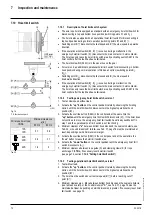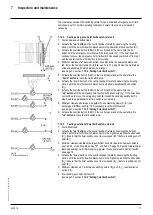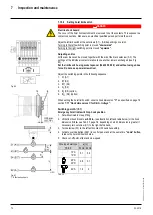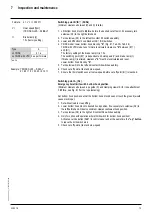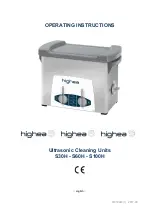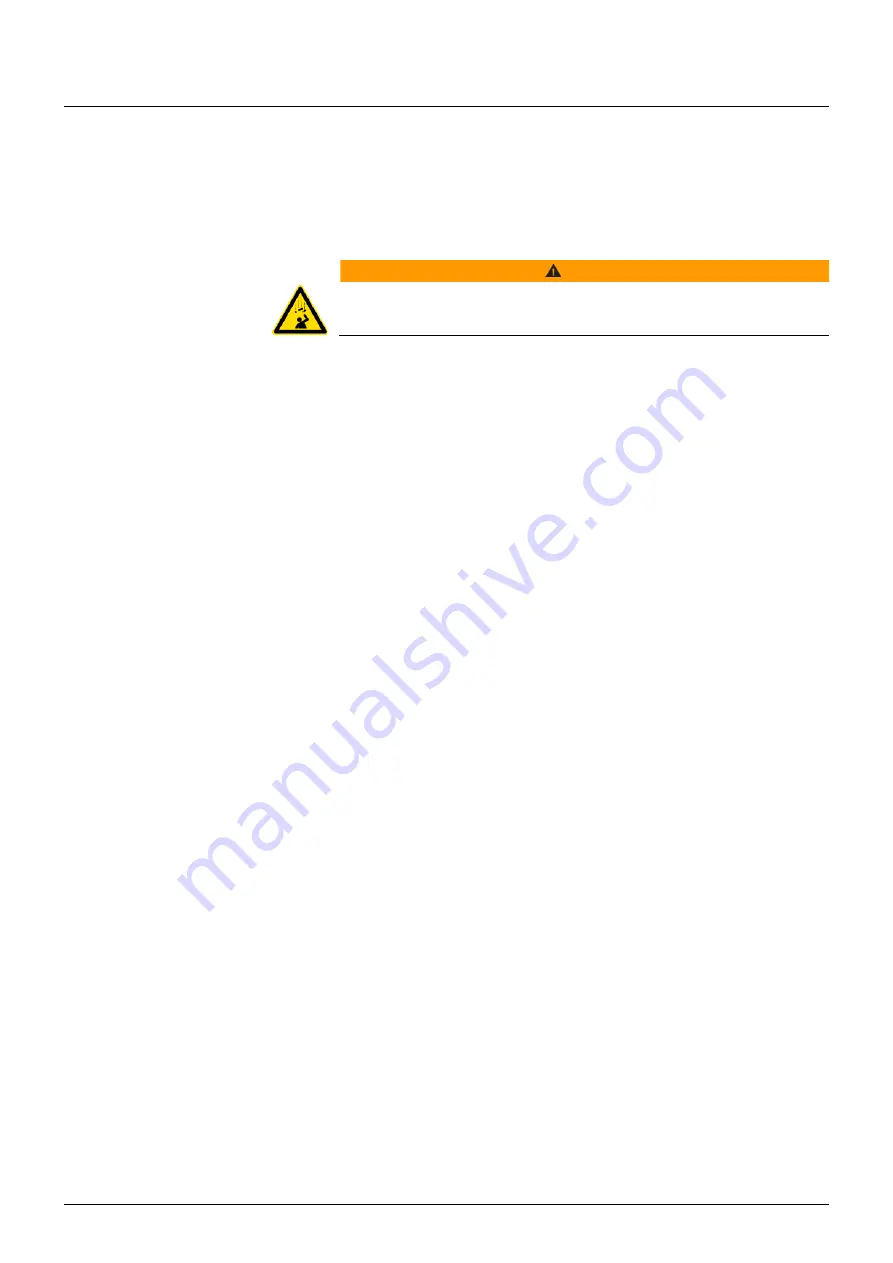
7
Inspection and maintenance
03.2018
59
ba
-o
.2
.6
.0
-us
-1.
1-
y
|
A
11
86
75
01
R
ev
A
A
7
Inspection and maintenance
This section deals with operational reliability, availability, and maintaining the value of
your wire rope hoist.
Although this wire rope hoist is practically maintenance-free, the components subject to
wear (e.g. wire rope, brake) must be inspected regularly.
Inspection and maintenance must be carried out by qualified persons.
WARNING
Falling parts hazard.
➢
Cordon off and secure danger area before inspection and maintenance work.
General information on inspection and maintenance
1.
Make sure a qualified person performs inspection and maintenance.
2.
Perform maintenance and repair work only when the hoist is unloaded.
3.
Before starting disconnect power and implement a Lockout/Tagout (LOTO) procedure
before servicing the equipment.
4.
Check that the hoist is de-energized.
5.
Perform periodic inspections including maintenance every 12 months, possibly earlier
if so prescribed by national regulations like ASME B30.16.
NOTE
: The specified inspection and maintenance intervals apply for normal
conditions of use.
If major components are replaced, further tests must be performed.
•
Replacing components of the overload safety device (sensor, electronic overload
device)
For load test of cut-off values of system, see separate Operating instructions / Service
manual
•
Replacement of electrical equipment and renewal of electric leads and connections
Insulation resistance test and testing the continuity of the PE system
•
Correct phase connection
The hoist's electrical equipment must be checked regularly. Damage to electrical
equipment, loose terminals, damaged cables and worn switchgear contacts must be
remedied immediately.
The inspection and maintenance intervals must be adapted accordingly if one or more the
following conditions apply:
•
If after evaluating the actual use it can be seen that the theoretical useful life of the
hoist will be less than 10 years.
•
In the case of operation in more than one shift or heavy duty.
•
In the case of adverse conditions (dirt, solvents, temperature, etc.).
•
If abrasive dusts are present (foundry, cement industry, glass manufacture or
processing, etc.) the maintenance intervals for the rope guide (cleaning, lubricating,
checking and if necessary replacing tension spring, etc.) must be reduced.
•
A general overhaul must be carried out after the useful lifetime has expired.
•
Lubricants and lubrication points, see section
“
Lubricants
”.


























